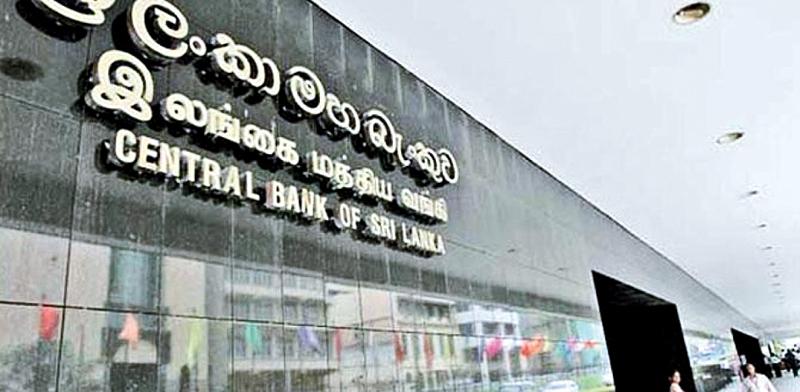
Era of investing in ‘pump and dump’ stocks and unlisted companies is over, assures Governor Coomaraswamy :
Central Bank Governor Dr. Indrajit Coomaraswamy has assured that the re-entry of Sri Lanka’s largest social security scheme, the Employees Provident Fund (EPF) into the Colombo Stock Exchange (CSE) will only be under a clean slate with proper checks and balances.
“We don’t know when we will start investing but we have left that decision to the investment committee to decide when they are comfortable with after all the preparatory work is completed,” the Governor told the Sunday Observer recently from Oman, where he participated in a number of road shows in the Middle East to entice Foreign Direct Investments into Sri Lanka.
Responding to threats made by opposition legislators of the Janatha Vimukthi Peramuna to launch street protests against the Central Bank’s plans, Dr. Coomaraswamy said that their officials are planning to organize meetings with interested Trade Unionists soon to clarify the Bank’s future plans.
“We haven’t finished the separations yet and it will take a little time to complete those. But, there is now an investment committee that meets on a daily basis in the morning and unlike the case in the past, it is no longer decisions taken by one or two traders,” said Dr. Coomaraswamy.
State Minister of National Policies and Economic Affairs Dr. Harsha de Silva, during his period as an opposition legislator few years ago had called for separations between the Central Bank’s agency functions of the Public Debt Department and the EPF and called for the removal of conflicts of interests in the Bank. Dr. de Silva argued that the two functions are associated with two conflicting objectives as debt management function of the Central Bank will borrow at the lowest possible cost (interest rate) although while managing the EPF, the same Bank would maximize returns by seeking highest interest rates.
Meanwhile, spelling out a number of new internal measures taken to improve processes and procedures since the EPF ended capital market investments in 2015, Central Bank Governor, Dr. Coomaraswamy outlined that the Bank has developed new investment and trading guidelines following consultations with international agencies.
He added that while CCTV cameras and voice recording systems have also been put in place, the segregation between the front, middle and back office has now been made more entrenched.
“We are also going to provide training for people who are going to trade in the stock market. Until we have developed the capacity in terms of human resources for trading, we won’t start investing,” the Governor assured.
He further disclosed that the Central Bank is presently in the process of working out a clear guideline to determine which type of companies to invest in. It is learnt that the EPF, with a membership of 2.6 million and a massive fund value of over Rs. 2 trillion at the end of 2017, had recently started operating in the secondary market in government securities.
“Even if we decide to invest in the stock market, it would not be more than 5% of the portfolio but even this number is yet to be decided by the investment committee,” the Central Bank Governor said.Although a majority of EPF’s investments (more than 90 percent) are in government securities, the Central Bank in the past drew widespread criticism especially during the period from 2010 to 2013 as EPF incurred losses by purchasing stocks in companies with artificially bloated share prices.
“Although the EPF had earlier invested in pump and dump stocks and unlisted companies, those kinds of things can never happen again. The whole idea of re-entering the market is only to optimise the return of the fund members,” Governor Coomaraswamy said assuring that transparency will be a key feature of their operations, going forward.
Meanwhile, Chairman of the Inter Company Employees Union, Wasantha Samarasinghe stated that during the Rajapaksa regime, 9% of the EPF was invested in the CSE, during the 5-year period between 2008 and 2012, and that the fund suffered a loss of Rs 28 billion as a result of this. Alleging that attempts are being made to bring the same proposal that the Rajapaksa family had brought but in a more diplomatic fashion, he charged that the new administration is obtaining a loan from the Asian Development Bank in the pretext of policy management to invest in the stock market.
In terms of the EPF Act, the Monetary Board of the Central Bank of Sri Lanka is entrusted with the responsibility of managing the Fund as its custodian, while the general administration of the Fund has been vested with the Commissioner of Labour. In terms of the section 5(e) of the EPF Act, Monetary Board may invest the monies of the Fund in such securities as the Monetary Board may consider fit and may sell such securities.
“The reason behind Central Bank being tasked with the management of EPF was the confidence the Government had then in 1958 reposed in Bank for the safety of the monies belonging to the working population of the country. Thus, as the custodian of the EPF monies, the Monetary Board should handle the investment of funds with the same caution, care and diligence as when it manages its own monies.
“The financial integrity which the Monetary Board has to show in managing EPF funds is all the more important since EPF members, individually or collectively, have no say in the investment of their funds,” a top investment analyst told The Sunday Observer.
